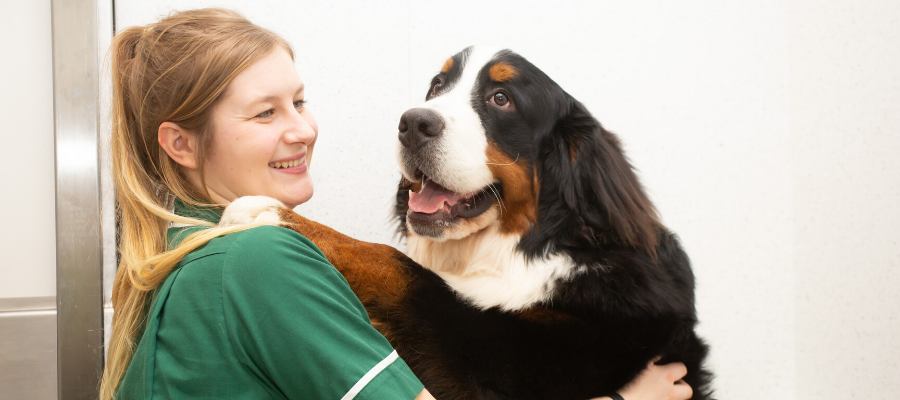
All dogs benefit from being groomed as it removes dead hair and dirt and keeps the skin healthy. Dogs with long coats in particular may need regular grooming to prevent matting of the coat which prevents the skin breathing and can cause skin irritation.
We recommend starting to brush your puppy daily as soon as you get them. This allows them to become accustomed to grooming which not only makes it easier to do but also can help with examinations during vet visits.
The type of brush recommended depends on the size and breed of your dog. Before a puppy has grown its adult coat, a very soft brush should be used. Always make sure that you fully research the suitability of a brush type for your pet’s coat, but below is a guide that may help you decide.
Brush |
Use |
Coat type |
|
Slicker brush
|
These remove loose hair and dirt from the coat. You must be gentle with this brush as pushing too hard may be uncomfortable for your dog. |
Short- medium coats Curly coats (Yorkie, Golden Retriever, Cocker Spaniel, Cockerpoo) |
Rubber brush/ mitt |
These massage the skin and remove dead hair. |
Short coats (Boxer, Staffie, French Bulldog) |
Undercoat rake |
These remove dead undercoat and tangles. The pins should be the long enough to get to the undercoat but not too long that they damage the skin. |
Thick coats (Husky, German Shepherd) |
Bristle brush |
These are for brushing the top coat and stimulating the skin. These are especially good for dogs that shed a lot. |
Any coat type. Coarser bristles should be used for coarser coats (Pugs, Greyhounds, Beagles) |
Pin brush |
These are good for brushing the top coat but do not remove head hair as well as a bristle brush. | Medium to long coat types |
Bathing
All dogs benefit from a bath at least a few times a year. Some dogs require more frequent bathing but it is important not to bath them too often as it can dry out their skin and coat.
Do not use a human shampoo, even a baby shampoo as dogs have a different pH and it is too harsh for their skin. There are lots of different dog shampoos available.
Use a rubber mat in the bath to prevent your dog from slipping. It is easier to use a shower head in the bath. If you do not have one, use a large jug instead.
Using lukewarm water, start at the back end. The face tends to be the least tolerated so leaving this until the end will help with getting them to cooperate with you.
Once wet, massage the shampoo in gently. Then rinse, rinse and rinse again! It is important to ensure you have rinsed all of the shampoo out otherwise it may cause skin irritation.
Take extra care around the face. Water in the dogs’ ears may lead to ear infections so it is important to minimise this. Hold your dogs’ ear flap down and gently rinse over the surface- always downwards. Similarly, you must avoid getting shampoo in their eyes as this will sting.
Towel dry them off- you can use a hairdryer if they will tolerate it but ensure you use a cool setting.
REWARD!
The better the reward, the better they will behave for grooming and bathing next time!
Reputable Groomers
If you have a breed with a coat that requires clipping, it is important to find a groomer and build a good relationship between them and your dog. Some groomers specialise in specific coat types/ breeds so it is beneficial to do your research beforehand. Also make sure that they have the appropriate levels of insurance, not just for public liability but also for accidents that may occur while your pet is under their care – it is not common, but any reputable groomer will have this in place just in case. We do keep a list of local groomers at the practice if you would like to request a copy, but please be aware that these are not recommendations, it is a starting point for you to be able to find one that meets the needs of your pet.
Nails
Clipping your dogs’ nails can be tricky to do at home. Each nail has a blood supply and catching it with the clippers will cause it to bleed and is painful for your dog. With white nails you are able to see the blood supply in the centre of the nail, however this can be deceiving and when the nails are black you are unable to see it at all. Even professionals may catch the quick sometimes. Walking a dog on pavements can help to wear the nail down. Also a coarse nail file can be used and is generally better tolerated by the dog and you will not catch the blood supply. For more detail, see our post regarding nail clipping.
Call us on 01435 864422 if you have any questions about grooming your pet.


